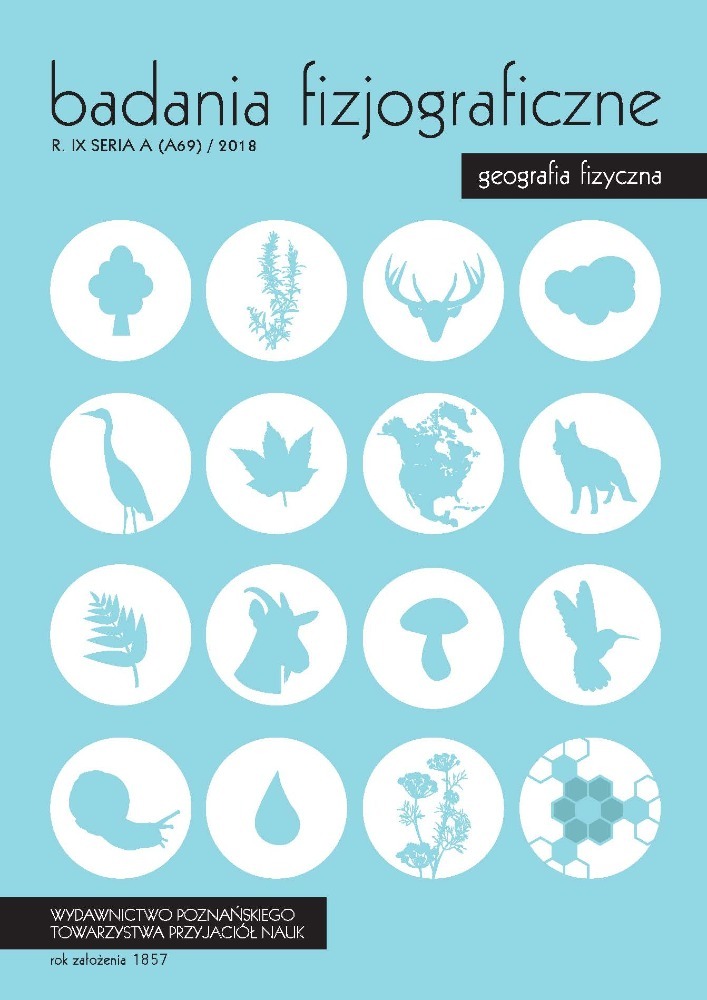Abstract
The aim of this paper is to characterize the graphical interface and functionality of virtual tour applications. The indirect aim is to provide initial technical assessment of selected virtual tours avaialable on Polish websites. In addition, the article presents the importance of the terms related to multimedia presentation of online tourist content. References have been made to concepts such as geoinformation society, geoinformation, geospatial data, interactive panoramas and tourism space. In the research, descriptive and comparative methods were used. The initial technical assessment was made by means of the Web Page Analyzer – 0.98 (http://www.websiteoptimization.com/services/analyze) from Website Optimization. Results Research into the interface, the functionality and technical assessment revealed that the selected virtual tour applications available online are very diverse. The differences exist both on the quantitative and the qualitative levels. The results have led to a conclusion that the Internet infrastructure, with special emphasis placed on the geo-information infrastructure, allows to develop and transfer tourist activity to the virtual world. The progressive functionality and ergonomics of the interfaces enable multimedia presentations in the form of virtual tours, including use of 360º panoramas, to reach an increasingly wide audience with diverse interests.
References
Czyńska K., 2006: Metody kształtowania współczesnej sylwety miasta na przykładzie panoramy Szczecina. Wykorzystanie wirtualnych modeli miast w monitoringu i symulacji panoram [pr. doktorska], <http://www.dbc.wroc.pl/Content/1710/metody_ksztaltowania.pdf> [dostęp: 12.09.2018].
Gajewski Ł., 2011: Analiza możliwości wykorzystania technologii informacyjnych do tworzenia internetowych wirtualnych spacerów po mieście Biała Podlaska, Zesz. Nauk. WSInf, 10, 1, 27–45.
Galitz W.O., 2002: The Essentials Guide to User Interface Design, John Wiley & Sons Inc.,New York, 15.
Internetowy leksykon geomatyczny, 2011a: <https://www.ptip.info/LMB/SPO%C5%81ECZE-%C5%83STWO-GEOINFORMACYJNE]> [dostęp: 29.11.2018].
Internetowy leksykon geomatyczny, 2011b: <https://www.ptip.info/LMB/GEOINFORMACJA>[dostęp: 29.11.2018].
Kuchta J. [b.d.]: Projektowanie interfejsu użytkownika, <https://docplayer.pl/35890185-Inzynieria-oprogramowania-jaroslaw-kuchta-projektowanie-interfejsu-uzytkownika-zasadyogolne.html> [dostęp: 10.09.2018].
Liszewski S., 2005: Przestrzeń turystyczna w ujęciu przedmiotowym. Przyczynek do dyskusji o przestrzeni geografii, [w:] W. Maik, K. Rembowska, A. Suliborski (red.), Geografia jako nauka o przestrzeni, środowisku i krajobrazie. T. 1. Podstawowe idee i koncepcje w geografii, Łódzkie Tow. Nauk., Łódź.
Młynarczyk K., 2014: Wirtualne wycieczki – nowy wymiar turystyki, <http://www.bankier.pl/wiadomosc/Wirtualne-wycieczki-nowy-wymiar-turystyki-2161239.html> [dostęp: 3.09.2014].
Monotype, 2016: The End of Flash: Separating Fact from Fiction, <http://go.monotype.com/rs/396-BOK-818/images/Monotype_eBook-The_End_of_Flash.pdf> [dostęp: 6.12.2018].
Nielsen J., 2003: Projektowanie funkcjonalnych serwisów internetowych, Helion, Gliwice.
Ngo D.C.L., 2001: Measuring the aesthetic elements of screen design, Displays, 22, 73–78.
Pilarska A., 2015: Zwrot ku informacji przestrzennej: o przestrzeniach kształtowania się społeczeństwa geoinformacyjnego w Internecie, Zesz. Nauk. Tow. Doktorantów UJ, Nauk. Społ., 11(2), 97–115.
Pilarska A., 2012: Wirtualna przestrzeń geoinformacyjna jako odzwierciedlenie przestrzeni geograficznej, [w:] A. Gese, M. Krzyżyński (red.), Książka streszczeń, II Kopernikańskie Sympozjum Studentów Nauk Przyrodniczych, I Edycja Ogólnopolska, Toruń, 57.
Pilarska A., Tomczykowska P., 2018: Virtual tourism space of cities, Journ. of Modern Sc., 38(3), 317–333, <https://doi.org/10.13166/jms/99215> [dostęp: 29.11.2018].
Sikorski M., 2006: Interfejs użytkownika: od pracy, przez emocje, do relacji, Unpublished paper presented at Interfejs użytkownika – Kansei w praktyce Conference, Warszawa 2006.
Tech Trends, 2017: The kinetic enterprises, <https://businessinsider.com.pl/media/internet/ilu-polakow-korzysta-z-internetu-raport-deloitte/f0wn6q4> [dostęp: 12.09.2018].
Zbyrowska K., 2011: Porównanie technologii HTML5 i Flash, Zesz. Nauk. WSInf, 10, 1, 74–89.
License
Copyright (c) 2018 AGNIESZKA PILARSKA, PAULINA TOMCZYKOWSKA

This work is licensed under a Creative Commons Attribution-NonCommercial-NoDerivatives 4.0 International License.
PTPN ma prawa autorskie do tytułu czasopisma
 https://creativecommons.org/licenses/by-nc-nd/4.0/
https://creativecommons.org/licenses/by-nc-nd/4.0/
